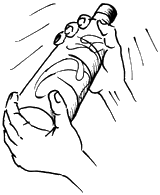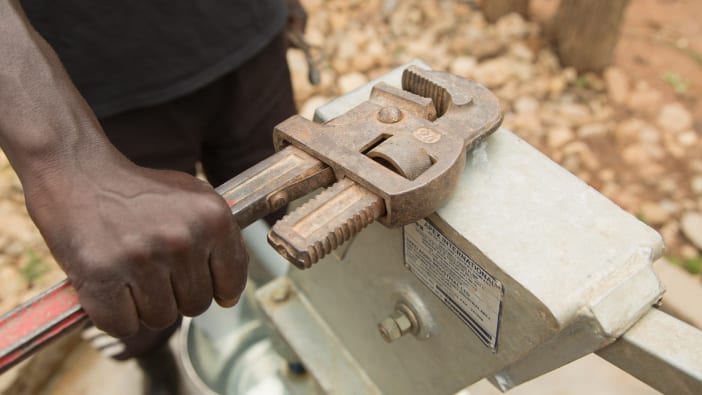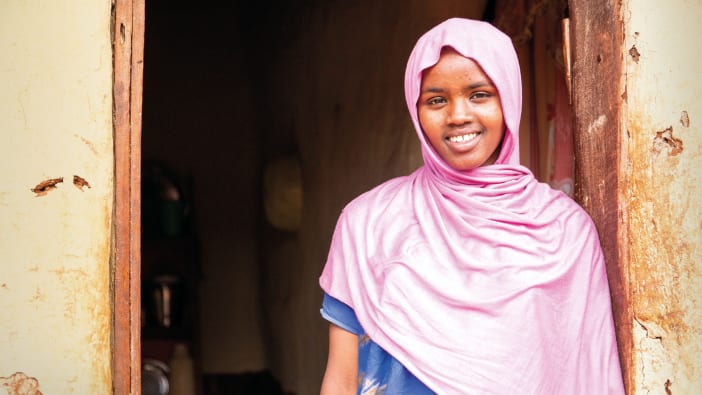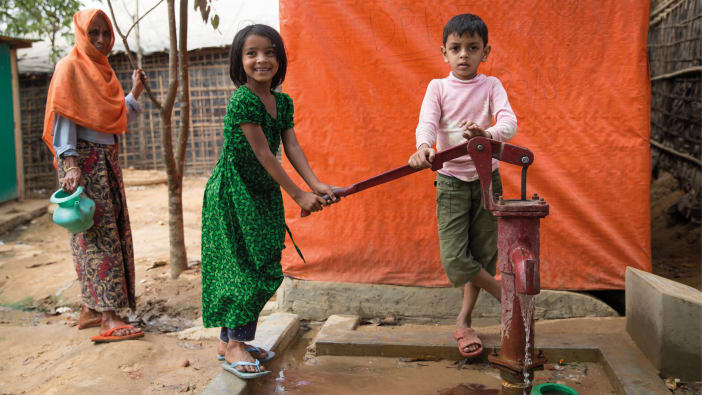by Paul Dean.
Many water and sanitation projects focus on making more water available to people and encouraging good personal hygiene practices. The quantity of water used for bathing, cleaning and other household tasks may prove more important for good health than its quality. However, the quality of drinking water is very important.
Drinking water that is not clean often leads to diarrhoea and other water-borne diseases. Each household should therefore try to purify enough water for drinking and cooking. This water should be kept separate from other household water. It should never be stored in containers that have been used to store fuel or pesticides.
Purification methods
One way of making sure that water is pure is to boil it. Many healthcare and hygiene programmes recommend this. Boiling water rapidly for at least five minutes will kill any disease-causing organisms. However, boiling water is not easy. It uses a lot of fuel, which is often expensive or difficult to find. It changes the taste of the water and most people do not like this. The water needs cooling before it can be drunk. While cooling, it needs careful storage to keep it free of contamination and to prevent anyone being scalded. So boiling water is neither easy nor popular.
Sand filters can also purify water (Footsteps 35). However, filtering does not always remove all the organisms. Alayer of charcoal can help solve this problem, but many experts still advise boiling filtered water or sterilising it by adding chlorine. Chlorine requires very careful measurement. If too much is added, the water will taste bad, while adding too little risks not killing all the organisms. The amount of chlorine in different powders or solutions can change over time, and also varies from product to product.
Solar disinfection
In countries where there is a lot of sun-shine, the heat and light of the sun can be used to kill disease-causing organisms. This method is becoming very popular because it is cheap, simple, and requires little work. Research has shown that if used correctly, the treated water is as clean as boiled water. The process is called solar disinfection (SODIS).
This method requires:
- clear plastic bottles of approximately 1.5 litres (those used for bottled water are ideal)
- water that is not too cloudy.
It is important not to use glass bottles, as they do not allow enough sunlight into the water. Plastic bottles have very thin walls which allow the sunlight to reach the water. Cloudy water should be left to settle before use and filtered through a cloth or sand filter if still cloudy.
Fill a clean bottle about three quarters full, put the top on and shake it vigorously for about 20 seconds. This ensures there is plenty of air in the water, which reacts with the sunlight to help the purification process. Then fill the bottle to the top and place on its side where it will receive direct sunshine for several hours and where wind will not cool the bottle. A roof is ideal if it is made from metal sheets, tiles or concrete, rather than thatch (which could possibly catch fire).











